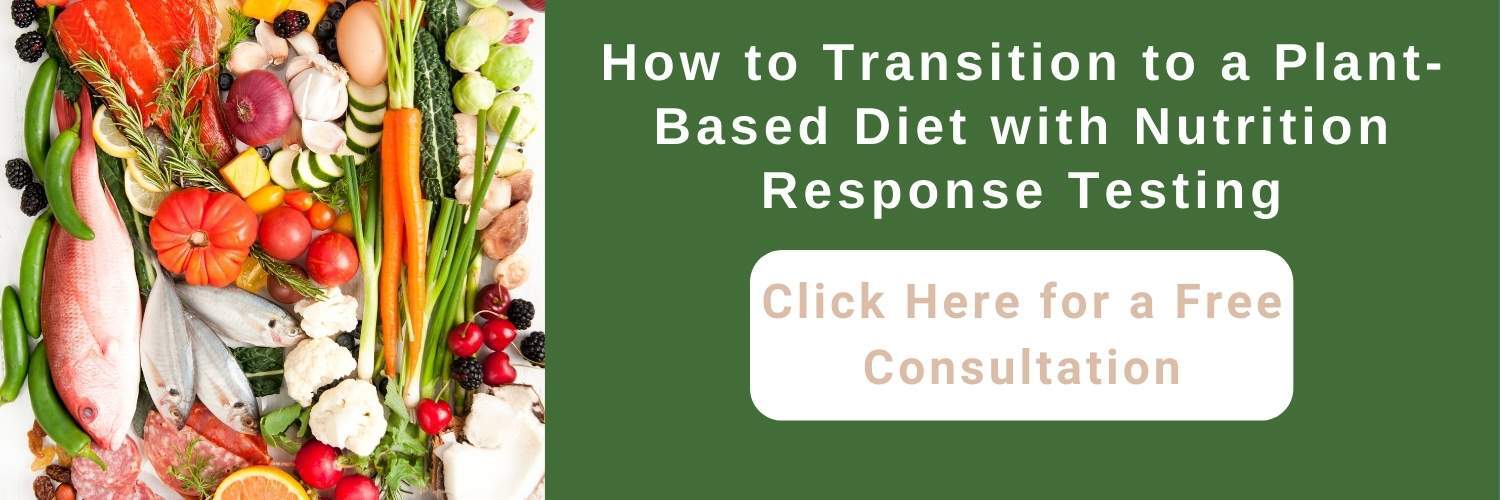How to Transition to a Plant-Based Diet: A 7-Step Guide
"The content below is not intended to be a substitute for professional medical advice, diagnosis, or treatment. Always seek the advice of your physician or other qualified health provider with any questions you may have regarding a medical condition."
You understand the benefits. You think you might be able to do it.
But you’re worried about the steps involved in making a plant-based transition.
We understand. This isn’t a diet — it’s a lifestyle change, and you want to be committed.
No matter if you’re in the process of gathering information, or you’ve already made your decision, you’ll want to know how to transition to a plant-based diet in a way that makes it easy to stick to it.
We break it down into
7 simple steps and share some tips and tricks to making your plant-based transition as smooth as possible.
Table of Contents
What Exactly Is a Plant-Based Diet?
It’s important to know that “plant-based” doesn’t necessarily refer to vegetarianism or veganism. How do they differ? Let’s take a look.
Vegetarians choose to eliminate meat and fish from their diets, but may still eat foods such as dairy or eggs. They may also continue to eat processed foods, such as bread, chips, and cereals
Vegans have chosen to eliminate all animal products from their diets, including foods like honey, since it’s produced by bees. However, vegans may also partake in the consumption of processed foods, provided they contain no animal ingredients.
The most important distinction of a plant-based diet is that while it heavily consists of plants, it doesn’t necessarily eliminate any foods from your daily eating. Some people who eat plant-based diets may add small amounts of animal products to their foods.
The plant-based lifestyle is largely focused on the consumption of whole, unprocessed foods that are mainly made from plants.
Consider Your Reason for Making a Plant-Based Transition
Before making a lifestyle change, it helps to have a clear reason as to why you want to make the change. Transitioning to a plant-based diet can be difficult at times, so having a clear purpose for the switch will help you stick to your goals in the long run.
Writing down your reasons and having them visible to you (on the fridge or at your desk) will help you stay focused on achieving your goals.
Maybe you’re not sure if you have a good enough reason, and that’s why you’re here. Below, we’ve outlined the main reasons why a whole-food, plant-based (wfpb) diet can be beneficial to anyone.
Why Should I Switch to a Plant-Based Diet?
Plant-based diets offer a host of benefits. Whether you’re struggling with weight, or are at risk for heart disease or diabetes, plant-based eating is actually known to reverse diseases, even in advanced stages.
Many studies suggest that a plant-based diet is associated with ...
… but it is also linked to the treatment and prevention of:
- High cholesterol
- Hypertension; and
- Certain cancers
In fact, the Academy of Nutrition and Dietetics believes that an “appropriately planned” plant-based diet is nutritionally adequate and appropriate for all stages of life, including:
- Prenatal
- Pregnancy
- Breastfeeding
- Infancy and childhood
- Adolescence and adulthood; and
- Athletes
But, before you get excited and start clearing out your cupboards and freezers of foods that don’t fit the bill, remember that a new diet requires planning and willpower.
Below, we outline the steps that you can take to set yourself up for success when making a plant-based transition.
How Do I Start Transitioning to a Plant-Based Diet?
The key to transitioning into plant-based eating is to go slowly. Start by cutting back on meat and slowly eliminating dairy. Find substitutes for foods before eliminating them. Stick with flavors that you love and add a few new recipes at a time. Most importantly, know what your body needs.
If you’re unsure about what your body needs, or feel as though a plant-based diet may leave you lacking in the nutrition you need, then Nutritional Response Testing (NRT) can help.
Nutritional Response Testing is based on the proven theory that your body knows what it needs and what it’s getting too much of.
With NRT, Dr. Donna Sergi will create a customized holistic health program inclusive of the foods you need, while eliminating the foods you don’t.
Don’t wait. Make your appointment at our
Brooklyn office today and read our simple guide on how to transition to a plant-based diet.
How to Transition to a Plant-Based Diet: 7 Simple Steps
#1: Start Slow
We tend to stick to what we know, and when starting a plant-based transition, that’s okay.
You likely eat several plant-based meals already, such as vegetable soup, oatmeal, or lettuce wraps.
By identifying what plant-based foods you already consume and working them into your weekly menu, you’ll be off to a good start.
Add one or two more plant-based meals, and you’re on your way to transitioning without feeling any pressure to be perfect from the start.
#2: Cut Back on Meat Products
If you’re not already incorporating a meatless day, now is the time to start.
Meatless Mondays became a very popular global movement to encourage people to reduce meat in their diets for health reasons.
So, instead of going cold turkey (pun intended), try incorporating one to two days a week, so you can get used to meatless meals.
Eventually, you’ll be eliminating meat from meals without even thinking about it.
But remember, meat isn’t forbidden when you transition to plant-based. You can always add meat here and there, but as you get more accustomed to the plant-based style of eating, don’t be surprised if you naturally start using meat substitutes.
#3: Cut Back on Dairy
The same goes for dairy. We aren’t suggesting that you eliminate it altogether.
Try making small changes, like using cashew cheese on your Margherita pizza instead of buffalo mozzarella.
You may also try adding avocado to your morning smoothie, instead of yogurt, to get that creamy texture you love.
Or simply cut back. If you’re used to putting cheese and sour cream on your tacos, then cutting out one or the other is a great way to reduce your consumption overall.
Substitute — Don’t Eliminate
It’s important not to eliminate foods that offer nutritional value — such as protein — if you don’t have anything to substitute them with.
For example, if you love a good beef chili, next time try doubling the beans to add that much-needed protein and additional fiber. You’ll find the chili to be just as hearty and flavorful, without sacrificing your nutritional needs.
#4: Switch to One Plant-Based Meal a Day
As you get more familiar with food substitutions and feel comfortable, then try switching to one plant-based meal a day.
For many, breakfast is the easiest meal of the day to make this change. Smoothies are a fantastic way to sneak all kinds of plant-based goodness into the recipe, giving you a vitamin-packed start to your day.
Or, you can try a bowl of oatmeal topped with cinnamon and banana or a plant-based breakfast muffin.
Eventually, this could lead to plant-based lunches, such as salads, soups, or sandwiches.
And finally, adding a few plant-based dinners in there as well.
#5: Stick With Familiar Recipes and Flavors
When you’re learning how to transition to plant-based eating, experimenting with new flavors can quickly turn you off from your diet change. Sticking to the familiar flavors that you love will help make the transition much smoother.
If you’ve never eaten curries, save those for a later day. Or if stews were never a part of your routine, then put them off to try another time.
Familiar flavors will help you learn to love your new lifestyle.
So, if Monday has always been spaghetti and meatballs for dinner, try a plant-based pasta (such as pasta primavera) instead.
#6: Pick a Few New Recipes as You Get Into Your Routine
Start experimenting with a few new recipes using the ingredients you’ve come to love the most. Knowing the five plant-based food groups will help get you started.
- Fruits — all types of fruits, including berries, apples, pears, citrus fruits, etc.
- Vegetables — any type of vegetables, such as greens, peas, peppers, cucumber, etc.
- Legumes — these are beans, like chickpeas and kidney beans, but also include lentils and more.
- Tubers — root vegetables including parsnips, potatoes, yams, beets, etc.
- Whole grains — aim for grains that are less processed, such as brown rice, barley, quinoa, etc.
Aiming for recipes that include two or more of these food types will ensure a healthy variety and balance of whole foods in your new diet.
#7: Know Your Nutritional Needs
Are you unsure of what your body needs? Seeking help from a professional in holistic and whole-food nutrition can be very helpful.
Not only can a nutrition expert guide you to eat the foods that satisfy your nutritional needs, but they can help you to make complementing lifestyle changes, such as:
- Getting the proper hydration
- Exercising more
- Journaling or meditating
- Improving your sleeping patterns
- And more
Dr. Donna Sergi at
HealthierU in Brooklyn, NY, has helped many patients on the path to a whole-food, plant-based transition, and she can help you too.
How Long Does It Take for Your Body to Adjust to a Plant-Based Diet?
You will begin adjusting almost immediately, and if you stick to it, you can expect to feel the full effects after six weeks. Immediate changes include frequent trips to the bathroom and improved cholesterol and blood pressure, while an increase in energy and a clear complexion will come later.
4 Tips and Tricks to Making a Plant-Based Transition
To make your transition even smoother, follow our 4 tips and tricks to making plant-based eating fun and simple.
- Compile new recipes — When you find a recipe you love, bookmark it or save it to the cloud. Nothing is worse than finding a favorite only to lose it to the depths of the internet.
- Continue your education — There will always be something you don’t know about or are unsure of, like, “What are hemp hearts even good for?” Or, “What’s the difference between cacao and cocoa anyway?” Look it up! The more you know, the better your choices will be.
- Try some exotic new fruits and vegetables — Maybe you’ve never used dates in your cooking before, but did you know it’s a popular ingredient in Morocco, where many dishes are plant-based? Or how about a dragon fruit parfait? Exploring new flavors is fun and will keep your plant-based transition exciting.
- Find local restaurants offering plant-based options — Eating out is fun and convenient, and the last thing anyone wants is to have to turn down an offer of dinner out with friends. By knowing which restaurants in your area offer plant-based options, you’ll always be able to suggest a place to eat.
How Nutrition Response Testing Can Determine the Best Whole Food, Plant-Based Food Options for You
At HealthierU, our mission is to help you get well.
Dr. Donna Sergi is a Certified Holistic Chiropractor and Nutrition Response Practitioner who’s dedicated to guiding her patients to wellness through a holistic approach.
Through Nutrition Response Testing and an individualized holistic health plan, you too can feel your best.
Nutrition Response Testing and a whole-food, plant-based diet can help with:
- Weight loss
- Hormonal imbalances
- Digestive health
- Acne
- Hair loss
- Candida
- Hyperthyroidism
- Heart disease
- And much more
Call to schedule an appointment today.






